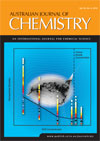
Australian Journal of Chemistry
Volume 65 Number 2 2012
CH11366 Influence of Surfactant Concentration on Laser-Based Gold Nanoparticle Formation and Stability

The time evolution of gold nanoparticles produced by laser ablation synthesis in solution (LASiS) as a function of sodium dodecyl sulfate concentration in aqueous solution is explained in terms of a simple kinetic model. Transmission electron microscopy studies show that the nanoparticle size distributions are not influenced by surfactant micelles.
CH11414 Pyrido[1,2-a]pyrimidinones and Thiazolo[3,2-a]pyrimidinones: Precursors for Pyridyl- and Thiazolyliminopropadienones, R–N=C=C=C=O
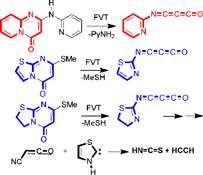
2-Pyridyliminopropadienone and 2-thiazolyliminopropadienone are obtained by flash vacuum thermolysis (FVT) of the title compounds and characterized by low temperature IR spectroscopy, but the corresponding dihydrothiazolyliminopropadienone eliminates cyanoketene, isothiocyanic acid and acetylene.
CH11352 Kinetics and Mechanism of the Reaction of Dichlorotetraaquaruthenium(III) and Thiols

The formation of an intermediate ruthenium(iii) thiolate complex by the interaction of RSH (R = glutathione and l-cysteine) and dichlorotetraaquaruthenium(iii), [RuIIICl2(H2O)4]+, is reported. The results are interpreted in terms of a mechanism involving a rate-determining inner-sphere one-electron transfer from RSH to the oxidants.
CH11330 Divergent Synthesis of Benzo[d]thiazoles by PIFA-Mediated Cyclization of β-Oxo Thioamides
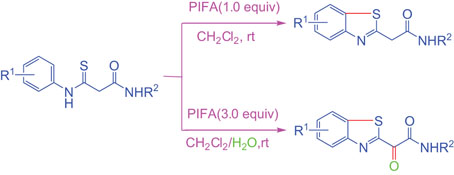
An efficient and divergent synthesis of benzo[d]thiazoles is developed by phenyliodine bis(trifluoroaceate) (PIFA)-mediated oxidative cyclization of readily available β-oxo thioamides based on reaction conditions selection.
CH11409 Solid-State Methylamine VUV Irradiation Study Using Carbon Monoxide as an H Radical Scavenger
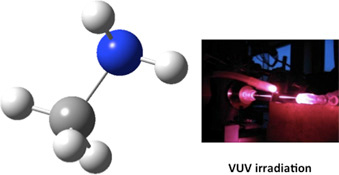
Solid-phase methylamine was VUV photoprocessed at low temperature (20 K). The use of CO as an H radical scavenger gave new insights about the photomechanisms of methylamine photodestruction as well as new possible ways for the formation of amides in the interstellar medium.
CH11334 Structural Characteristics and Large Non-Linear Optical Responses of New Alkaline Earth-Based Alkalides
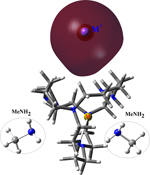
A new kind of alkaline earth-based alkalide M2+(H5Azacryptand[2.2.2]–)M′–·2MeNH2 (M = Be, Mg, Ca; M′ = Li, Na, K) exhibits unusually large non-linear optical (NLO) properties.
CH11375 First Synthesis of Diindeno[1,2-g:1',2'-s]rubicene Derivatives and their Evaluation as Semiconductors

Derivatives 4a–d of the novel diindeno[1,2-g:1′,2′-s]rubicene ring system have been prepared in three steps from 1,5-dichloroanthraquinone. The photophysical properties of this novel ring system and a correlation of the organic field-effect transistors’ performance with X-ray crystallographic analyses are reported.
CH11454 Quantitative Analysis of Dye Decolourization Reactions in Mixed Micellar Systems of Sodium Dodecyl Sulfate with Tween-20, Tween-80, and Triton X-100
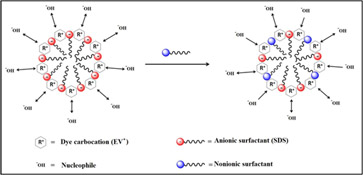
The alkaline hydrolysis of hydrophobic triphenylmethane dye (ethyl violet) is inhibited in sodium dodecyl sulfate mixed micellar systems with various nonionic surfactants, due to repulsion of OH¯ ions by the negatively charged micellar aggregates. Positive cooperativity model of enzyme catalysis is successfully applied for quantitative analysis of micellar data.
CH11420 Dual-Level Direct Dynamics Studies on the Hydrogen Abstraction Reactions of CH2CH3–n Xn + HBr (X = Cl, Br and n = 1, 2)
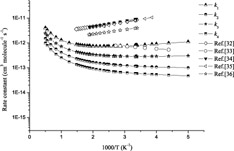
The reactions of the HBr molecule with CH2CH2Cl (R1), CH2CHCl2 (R2), CH2CH2Br (R3), and CH2CHBr2 (R4) are investigated theoretically by a dual-level direct dynamics method. Using the canonical variational transition state theory (CVT) or CVT with the small-curvature tunnelling (SCT) correction, the rate constants are calculated over a wide temperature range of 200–2000 K at the G2M(RCC5)//MPW1K/6–311+G(d,p) level. The effect of chlorine or bromine substitution on the ethyl radical reactivity is discussed.
CH11427 Theoretical Design Study on Photophysical Properties of Light-emitting Pyrido[3,4-b]pyrazine-based Oligomers
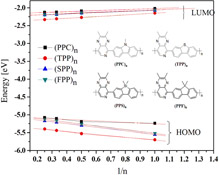
This work investigates how electronic structures and photophysical properties can be adjusted by the introduction of different donors. Four series of pyridopyrazine-based oligomers, (PPC)n, (TPP)n, (SPP)n and (FPP)n (n = 1–4), show a smooth binomial relationship between the inverse of their repeating unit numbers (1/n) and the HOMO–LUMO gaps, IP(a/v), EA(a/v) and optical properties.
CH11435 Synthesis, Anti-Arthritic, and Anti-Inflammatory Activity of N-Tosyl aza Cyclophanes
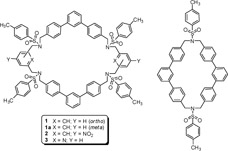
The synthesis of some novel N-tosyl tetra and diaza cyclophanes incorporating m-terphenyl as spacer units is described. All the N-tosyl aza cyclophanes exhibit excellent anti-arthritic and anti-inflammatory activity.
CH11485 Synthesis and Application of New Photocrosslinkers for Poly(ethylene glycol)
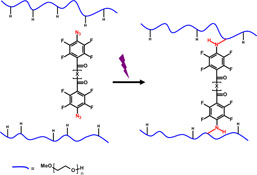
Photocrosslinking of PEG using exogenous agents is a convenient way to produce branched PEG from commercial sources. In this study, two series of new photocrosslinkers (i.e. bis-fluorophenyl azide and bis-trifluoromethyl diazirine) were synthesized and practical conditions for photocrosslinking of a 10-kDa PEG were explored.



